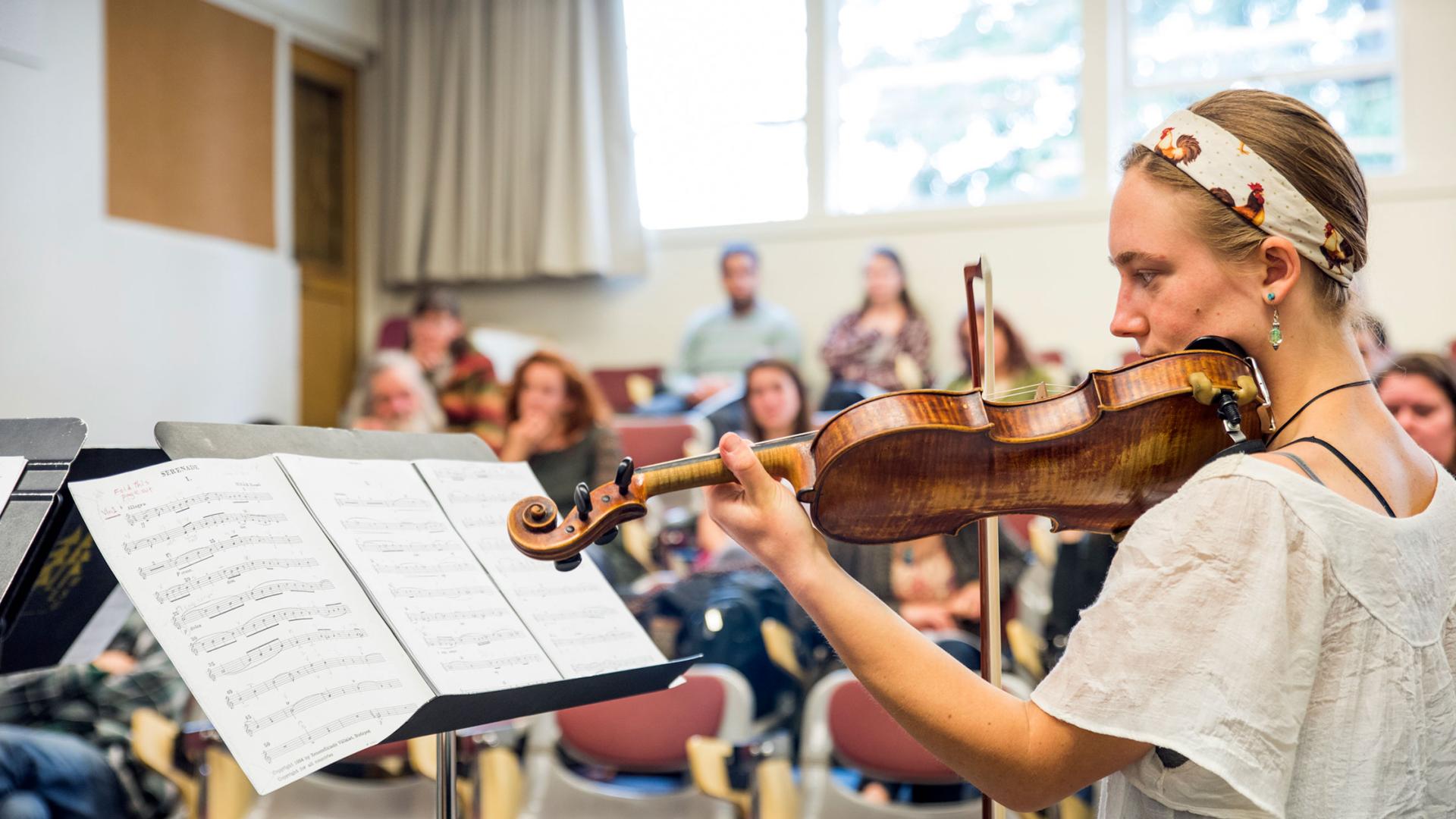Breadcrumb
Advising Students on Academic Notice
Circumstances within or outside the student control can contribute to academic struggle; as advisors, it's important to provide extra support to advisees who are on academic notice. Students are placed on academic notice if either the overall grade point average or the cumulative GPA at Cal Poly Humboldt falls below 2.0 (C grade average). Academic notice, if not resolved, can lead to the student being academically disqualified.
Identify which of your advisees have been placed on academic notice.
After semester grades have posted, review your advisee roster for students who have been placed on academic notice. This is an important step to take before the semester begins, just in case the student needs to make adjustments to their schedule.
- Go to MyHumboldt, click the Peoplesoft dropdown menu and select Faculty Center. You will see a table view of your assigned advisees.
- Click the Academic Standing button at the top of the table. This will sort your advisees by Good Standing, Academic Notice, and Reinstated.
Now that you know which of your advisees are on academic notice, follow the steps below
Reassure them that Academic Notice is not uncommon, and recoverable. Negative feelings need to be defused to allow a student to make positive changes. Regular meetings with an advisor can be especially meaningful for students on academic notice, as they provide a supportive space to discuss their challenges.
Email advisees to request a meeting with you; Include the Academic Intake Form below.
Be sure to provide your scheduling link; This meeting will likely take an hour. Receiving the academic intake form prior to the initial meeting is helpful, allowing time to review student responses prior to meeting:
- Has your advisee experienced any external barriers to their success? If so, they may be able to retroactively withdraw from all or some of their classes (official supporting documentation will be required). Refer to Office of the Registrar Withdrawal for more details.
- Has your advisee been struggling with internal barriers to success?
- Do the behaviors/skills they want to improve seem achievable?
The process of completing the form is meant to be a learning experience, not a punitive task! At the end of the form the student is asked to look back on their responses and reflect on challenges that were out of their control, as well as those things they could have chosen to do differently.
Steps to Completing the Academic Action Plan With Your Advisee:
- Financial Aid Status and Academic Standing boxes: Emphasize that there are differences between University Academic Standing policies and Financial Aid status.
- Check Student Center for any Financial Aid unit deficiency warning or loss of eligibility message. Students can click on the details of their ‘To-Do List’ item for information regarding Satisfactory Academic Progress (SAP) policies. You may be asked to write a letter of support if a student appeals their loss of eligibility. All questions regarding the student’s financial aid status should be directed to the Financial Aid office!
- Review academic notice or reinstatement policies with the student at Academic Regulations in the Humboldt catalog and Advising Center academic-notice-disqualification-and-reinstatement-information.
- Academic Goals: Use the Learning Center GPA Calculator to calculate grades needed to return the student to good standing. An unofficial transcript is needed to calculate GPA.
- Personal Challenges/Concerns: Use Recommendations/Comments box to refer student to appropriate campus resources.
- Action Plan: Discuss what academic habits the student plans to cultivate with regard to planning and organization, follow-through strategies, test-taking strategies, reading and note-taking strategies? Refer to the list of suggested academic habits and have the student generate a short list of manageable action steps.
- Resources: What resources will you use to ensure your academic success?
- Goals: What goals might the student have for the semester, in addition to academic recovery? Conclude by revisiting earlier encouragement, focus on positive outcomes, to help the student feel a sense of hope, empowered and ultimately in control of their own destiny.
Both Advisor and Student should sign the form as an indication of serious intent. Schedule a follow-up meeting with the student before ending the meeting.
Send a separate message to those students on Academic Notice. It can be especially helpful for students on notice to receive regular check-ins throughout the semester. Ask, for example,
- How are classes going?
- Would taking one class optionally for CR/NC be helpful?
- Are you using campus resources and meeting your goals?
Once you have had the opportunity to meet with your advisee you can lift the Academic Notice hold from their Student Center so that they can make adjustments to their schedule if needed. Please note: It's important that students on notice take a lighter course load so that they can focus on improving grades.
Steps to removing Holds:
- From Faculty Center, click the student whose hold you wish to lift. Once in Student Center, confirm what Holds the student has (there may be more holds that they will want to resolve):

- At the button bar on top of the Student Center page, click on General Info:

- Review Service Indicators for the Academic Notice hold. Please note: This view only shows 5 holds; You may need to click to see more holds:

- Once you've found the Academic Notice hold, click it to enter the Edit Service Indicator page and either release or postpone the hold:

- Click the Release button to completely lift the hold, OR change the Start Date, then click the Release button. Changing the Start Date to a date later in the semester can give you the ability to revisit with the student prior to semester registration:

- Return to Student Center to verify that the hold is no longer present in the Holds box.
Academic Intake Form
The Academic Intake Form is a way to gain insightful information on what factors might be helping or hindering a student's academic performance. This is an opportunity for a student to self-report on study habits, extracurricular activities, and any other considerations.
Academic Intake Self Assessment Form fillable PDF
Academic Action Plan
This plan is a contract to be completed together by advisor and student. Reviewing this plan should assist students in understanding the academic notice policies around academic standing and support services available on campus.
Academic Action Plan fillable PDF
A few helpful resources:
- REPEAT Policy
- WU Forgiveness Policy
- Learning Center Services
- Tutoring, Writing support, Academic Peer Coaching, Supplemental instruction, Digital Learning Resources.
- Counseling & Psychological Services





